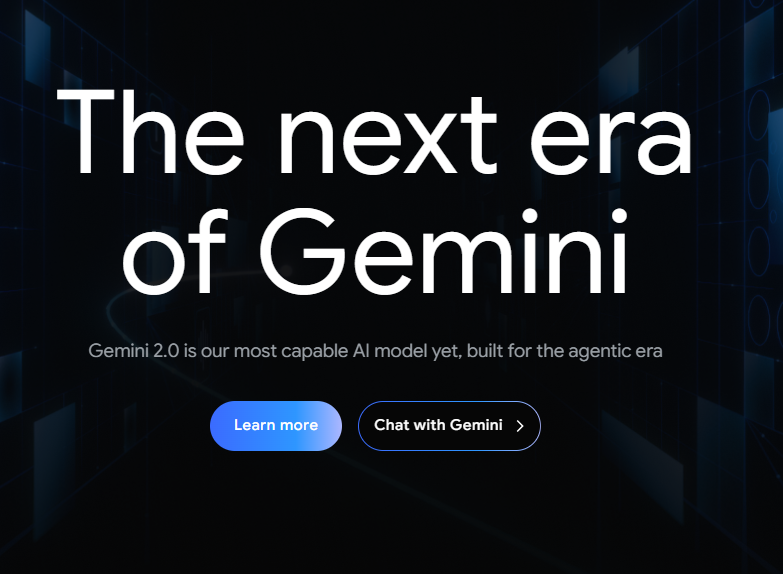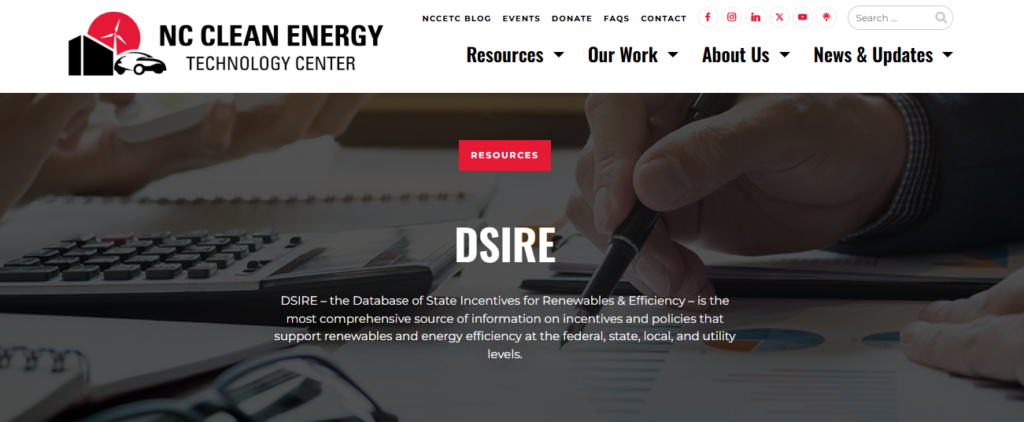For More Free Videos, Subscribe to the Rhodes Brothers YouTube Channel.
“What Microsoft wants, Microsoft gets. These companies are so big they’re like nation-states.” – John S. Rhodes

Artificial intelligence (AI) is revolutionizing virtually every industry, but few would have guessed it would spark a renewed interest in nuclear power. The intersection of AI and nuclear energy is not just a technological oddity—it’s a seismic shift driven by necessity, innovation, and strategic foresight. As the energy demands of AI systems skyrocket, companies like Microsoft are spearheading efforts to bring dormant nuclear plants back to life, ushering in a new era of energy production and management.
But what does this mean for you? Whether you’re a tech enthusiast, an entrepreneur, or someone curious about where our energy future is headed, understanding this dynamic relationship can open up opportunities to profit, innovate, and adapt. Let’s dig into how AI and nuclear power are shaping the future and how you can position yourself to benefit from this transformation.
TL;DR
- AI’s energy appetite is insatiable: Modern AI systems and data centers are driving unprecedented energy demand.
- Nuclear power is making a comeback: Corporations like Microsoft are investing in nuclear energy to meet their long-term energy needs.
- Government incentives are paving the way: Tax credits and favorable policies are making nuclear power more viable.
- Public perception is shifting: The narrative around nuclear energy is changing, with many seeing it as a greener alternative to fossil fuels.
- Opportunities abound: Entrepreneurs can capitalize on this trend by entering adjacent markets like AI tools, energy tech, or ESG-aligned projects.
Why AI Is Driving Unprecedented Energy Demands
Let’s start with the basics: AI eats energy for breakfast—and lunch and dinner too. Advanced AI models like ChatGPT, Google’s Bard, and other large-scale machine learning algorithms require massive computational resources. These systems perform billions of calculations per second, train on enormous datasets, and handle workloads that are both continuous and growing exponentially. From autonomous vehicles to recommendation engines, every AI-powered application demands a steady, reliable flow of energy.
This demand is largely fulfilled by data centers, the backbone of AI infrastructure. These vast facilities house powerful servers and hardware that operate around the clock. However, they also consume staggering amounts of electricity—not just for computation but also for cooling, maintenance, and redundancy systems to avoid downtime.
Tools Driving AI’s Energy Appetite
Several tools and platforms are responsible for this growing energy consumption:
- NVIDIA GPUs and TPUs: High-performance processors like NVIDIA’s A100 and Tensor Processing Units (TPUs) are essential for training and deploying AI models. These GPUs are energy-intensive but indispensable for AI progress.
- Microsoft Azure AI: Microsoft’s cloud computing platform powers countless AI applications, requiring energy-intensive data centers to handle computational workloads.
- Google Cloud AI: Another major player, Google’s data centers enable a wide range of AI capabilities, from natural language processing to video analytics.
- Amazon AWS: As the largest cloud services provider, AWS supports AI training and deployment on a massive scale, making it a significant energy consumer.
The Data Center Energy Boom
According to a 2023 report by the International Energy Agency (IEA), data centers account for nearly 1% of global electricity demand, and this figure is expected to triple by 2030. Why? The complexity of AI systems like OpenAI’s GPT-4 and Google’s DeepMind models increases the need for computational power, which directly translates into higher energy consumption.
For perspective, training GPT-3, the predecessor to GPT-4, consumed an estimated 1,287 MWh (megawatt-hours) of energy—equivalent to the annual energy consumption of over 120 average U.S. households. With every new AI innovation, energy requirements are only increasing.
John S. Rhodes sums it up succinctly: “We need more power, and the grid is in no shape to take on the power needs.” This is why tech giants like Microsoft are turning to nuclear power as a solution.
Why Nuclear Power?
The energy demands of AI have outpaced the capabilities of traditional fossil fuels and even many renewable energy sources. Nuclear power is emerging as a critical solution for three key reasons:
-
It’s Clean and Efficient
Nuclear power produces zero carbon emissions during operation, making it a top contender for companies committed to Environmental, Social, and Governance (ESG) goals. With AI driving innovation in industries striving for sustainability, nuclear energy aligns perfectly with the push for greener solutions.
For context, a single nuclear power plant can generate more electricity than 1,000 wind turbines or 10,000 acres of solar panels, all without emitting greenhouse gases.
Stat to Consider: According to the World Nuclear Association, replacing just 10% of coal plants with nuclear power could reduce global CO2 emissions by over 2 billion tons annually.
Tools for Efficiency:
-
- Nuclear Simulation Software (e.g., NODESIM): AI-driven tools like NODESIM help optimize nuclear reactor performance, making operations cleaner and more efficient.
- Digital Twin Technology: This technology creates virtual replicas of nuclear plants, allowing operators to predict and prevent inefficiencies.
-
It’s Reliable
Unlike wind and solar power, which depend on weather conditions, nuclear energy provides a continuous and consistent energy supply. For AI applications, which require uninterrupted power to avoid downtime, this reliability is critical.
Example of Reliability:
Microsoft’s decision to partner with Constellation Energy highlights nuclear power’s importance. Constellation is investing $1.6 billion to restart a reactor that has been offline since 2019, ensuring Microsoft’s data centers have the energy they need to operate without interruption.
-
It’s Scalable
As AI expands, so too does its energy footprint. Nuclear power plants can be scaled to meet these growing demands, especially with the advent of Small Modular Reactors (SMRs).
Example of Scalability:
SMRs, such as those developed by companies like NuScale Power, are compact, efficient, and easier to deploy than traditional nuclear plants. These reactors can be built closer to urban areas or data centers, reducing energy losses during transmission.
How AI and Nuclear Power Are Creating Opportunities
As AI continues to revolutionize industries, it’s also creating ripple effects in energy production. The intersection of AI and nuclear power is not just solving today’s energy challenges—it’s unlocking new opportunities for businesses, investors, and innovators. This growing synergy is reshaping industries, enabling tech giants, entrepreneurs, and governments to collaborate in ways that were unimaginable a decade ago.
One thing is clear: AI is no longer just a consumer of energy—it’s a catalyst for change in how we produce, manage, and use it. And at the heart of this transformation are partnerships that are driving innovation in both AI and nuclear power.
The New Era of Energy Partnerships

Big tech companies are no longer just energy consumers—they’re becoming energy investors. Microsoft’s partnership with Constellation Energy is just the beginning. Other tech giants like Google and Amazon are also exploring ways to secure their energy futures.
This trend creates opportunities across industries:
- Entrepreneurs: Develop AI-driven tools for energy management or predictive maintenance for nuclear plants.
- Investors: Back companies specializing in nuclear technology or AI-energy integration.
- Job Seekers: Roles in AI-powered energy solutions, ESG consulting, or nuclear plant operations are on the rise.
Example Tools:
- Palantir Foundry: Provides AI-powered solutions for optimizing energy grid operations.
- C3 AI Energy Management: Helps energy providers and consumers reduce waste and improve efficiency through AI analytics.
How to Profit from the AI-Nuclear Revolution
The intersection of AI and nuclear power isn’t just reshaping the energy industry—it’s creating massive opportunities for individuals and businesses to profit. Whether you’re an investor, entrepreneur, or someone looking to align with future market trends, this revolution opens doors to financial growth and innovation. By tapping into cutting-edge technologies and leveraging clean energy trends, you can position yourself at the forefront of this transformative wave.
Here are some of the most effective ways to capitalize on the AI-nuclear revolution.
-
Invest in ESG-Compliant Stocks
Many corporations are aligning with ESG goals, which include investments in clean energy. Look for companies like Constellation Energy or those developing Small Modular Reactors (SMRs).
-
Build AI Tools for Energy Optimization
AI can predict energy demands, optimize grid allocations, and even simulate reactor performance. Entrepreneurs can create AI-driven platforms for energy companies.
Example Tool:

-
- DeepMind’s Power Grid AI: Google’s DeepMind uses AI to predict energy demand and optimize electricity distribution, making it a leader in this space.
-
Enter the Renewable Energy Market
While nuclear is the focus, it’s part of a broader clean energy narrative. Companies that integrate nuclear with renewables like wind and solar offer diversification opportunities.
-
Capitalize on Government Incentives

The U.S. government offers tax breaks and grants for nuclear energy projects. Businesses can leverage these incentives to reduce costs and increase ROI.
Pro Tip: Tools like DSIRE (Database of State Incentives for Renewables & Efficiency) can help identify available grants and incentives in your area.
Public Perception and the Role of Narratives
The narrative around nuclear power has shifted dramatically in recent years. Once vilified due to accidents like Chernobyl and Fukushima, nuclear energy is now seen as a necessary solution to combat climate change.
John S. Rhodes observed: “Pay close attention to the language. AI needing, requiring nuclear power—it’s not a conspiracy; it’s economics.”
This narrative shift is being driven by a combination of:
- Climate Change Awareness: As the effects of climate change worsen, nuclear energy is being rebranded as a clean, reliable alternative.
- Corporate Sustainability Goals: Companies like Microsoft are using nuclear energy to meet their ESG commitments, further normalizing its use.
Tools for Shaping Public Perception:
- Social Media Analytics (e.g., Brandwatch): Monitor public sentiment around nuclear energy and adjust messaging accordingly.
- AI-Powered Marketing Platforms (e.g., HubSpot): Educate consumers about the benefits of nuclear energy through targeted campaigns.
The energy demands of AI are reshaping how we think about power generation, with nuclear energy emerging as a key player. As this revolution unfolds, tools, partnerships, and public perception will play crucial roles in determining how businesses and individuals can profit and innovate in this space.
Actionable Steps to Leverage AI and Nuclear Power
As AI and nuclear power continue to shape the future of energy, there are countless opportunities for individuals to get involved and profit from this game-changing revolution. Whether you’re just starting out, running a business, or looking for smart investment opportunities, there are actionable steps you can take to align with this powerful trend. Below, we’ve outlined practical strategies tailored to different demographics so you can start leveraging the AI-nuclear synergy today.
For Beginners
If you’re new to the world of AI and nuclear energy, the best place to start is by building a foundational understanding of how these two industries intersect. Begin by exploring educational resources like the Rhodes Brothers’ YouTube channel (subscribe here), where they break down complex topics in an easy-to-understand way. Understanding the basics of nuclear energy’s role in AI-driven energy demands will help you grasp the broader picture. Once you’re familiar with the fundamentals, start small by adopting energy-efficient technologies in your personal life or business. For example, installing smart thermostats or energy-efficient appliances not only reduces your carbon footprint but also saves money—providing a tangible way to engage with the clean energy movement.
For Entrepreneurs
Entrepreneurs have an incredible opportunity to lead innovation at the intersection of AI and nuclear power. One way to get started is by developing AI tools that cater to the energy sector, such as predictive analytics platforms that can forecast energy demands or data visualization tools to help energy providers optimize performance. For example, creating a platform that monitors reactor efficiency in real-time could be a game-changer for nuclear operators. Additionally, entrepreneurs can position themselves as consultants to help businesses align with ESG (Environmental, Social, and Governance) goals by incorporating nuclear energy into their strategies. With companies like Microsoft and Constellation Energy leading the charge, there’s a growing demand for expertise in navigating this rapidly evolving space.
For Investors
For those looking to capitalize on the financial opportunities in this space, focusing on Small Modular Reactors (SMRs) is a smart move. SMRs are the future of nuclear energy—they’re smaller, safer, and more scalable than traditional reactors. Companies like NuScale Power are pioneering this technology, making them prime candidates for investment. Additionally, diversifying your portfolio to include AI-driven energy startups can provide significant returns. These startups are developing cutting-edge solutions for energy optimization and grid management, which are critical as AI continues to drive electricity demand. Platforms like Robinhood or E*TRADE make it easy to start investing in these innovative sectors, even if you’re new to the stock market.
By tailoring your actions to your experience level, whether you’re a beginner, entrepreneur, or investor, you can position yourself to take full advantage of the AI-nuclear power revolution.
Common Mistakes to Avoid
While the AI-nuclear revolution presents incredible opportunities, navigating this complex space comes with its challenges. To succeed, it’s crucial to be aware of common pitfalls that can hinder progress or lead to missed opportunities. By understanding and avoiding these mistakes, businesses, investors, and innovators can position themselves for long-term success in this transformative industry.
Ignoring the Long Game
One of the most common mistakes businesses and investors make in the AI-nuclear space is approaching it with a short-term mindset. Both AI and nuclear power are industries that require significant upfront investment, patience, and long-term planning to yield meaningful returns. Unlike trends that offer immediate gains, these sectors thrive on scalability, innovation, and gradual adoption. Small Modular Reactors (SMRs), for instance, are still in the early stages of development and may take years to become mainstream. Similarly, AI tools for energy optimization are evolving rapidly but require consistent updates and refinements to stay relevant. Adopting a long-term perspective is essential to fully capitalize on the transformative potential of these industries, as they will shape the future of energy and technology for decades to come.
Overlooking Public Perception
In the energy sector, neglecting public opinion can be a fatal mistake. Nuclear power, in particular, has a history of skepticism due to high-profile accidents like Chernobyl and Fukushima. Even with modern advancements that make nuclear safer and more efficient, public perception remains a critical factor in the success of nuclear projects. Companies must engage in transparent communication to educate the public about the benefits of nuclear energy, such as its low carbon footprint and reliability compared to fossil fuels or intermittent renewables. Failing to address public concerns can lead to resistance from communities, regulatory pushback, or even project cancellations. Building trust through outreach programs, partnerships with trusted organizations, and sharing safety data openly can help shift the narrative and secure public support.
Failing to Adapt
The energy landscape today is evolving at an unprecedented pace, driven by advancements in AI, new regulations, and the global push for decarbonization. Businesses that fail to stay informed risk falling behind their competitors. For instance, governments worldwide are introducing policies to incentivize clean energy, such as tax credits for nuclear projects or grants for AI-driven energy solutions. Companies that are slow to adapt to these opportunities may miss out on significant funding and market advantages. Additionally, technological advancements like AI-powered grid management or SMRs require continuous learning and integration. Staying informed about industry trends, regulatory changes, and emerging technologies is essential to remain competitive and relevant in this rapidly changing environment.
Avoiding these common pitfalls will not only help you navigate the challenges of the AI-nuclear revolution but also set you up for long-term success in this transformative space.
Frequently Asked Questions
Why is AI increasing energy demand?
AI systems require massive computational power, which translates to higher electricity consumption, especially for data centers.
Is nuclear power safe?
Modern nuclear reactors are much safer than older designs. Innovations like SMRs have enhanced safety protocols.
How can small businesses benefit from this trend?
Small businesses can offer AI tools, consulting services, or even ESG-aligned products to larger corporations involved in nuclear energy.
Are there government grants for nuclear energy projects?
Yes, the U.S. government offers tax incentives and grants to support clean energy initiatives, including nuclear power.
What are SMRs?
Small modular reactors are compact, factory-built nuclear reactors that offer scalability and enhanced safety.
How can I invest in this trend?
Look for companies involved in nuclear energy, AI-driven energy solutions, or ESG-compliant projects.
Is nuclear energy better than renewables?
Each has its strengths. Nuclear provides consistent energy, while renewables are intermittent but more sustainable.
How does this affect climate change?
Nuclear energy produces zero carbon emissions during operation, making it a key player in combating climate change.
What role does the government play?
The government supports nuclear energy through favorable policies, tax incentives, and grants.
What’s the future of AI and nuclear power?
The future lies in their integration, with AI optimizing nuclear operations and nuclear providing the energy AI needs.
Taking Action on the AI-Nuclear Revolution
The AI-nuclear revolution is a powerful opportunity to shape the future of energy and technology while building financial success. To recap, beginners can start by learning the basics through accessible resources while making small, meaningful changes like adopting energy-efficient technologies. Entrepreneurs can lead innovation by developing AI tools or offering consulting services that align with ESG goals. Investors can focus on game-changing technologies like Small Modular Reactors (SMRs) and diversify their portfolios by including AI-driven energy startups. Finally, everyone must avoid common mistakes such as ignoring the long-term nature of these industries, overlooking public perception, or failing to adapt to the rapidly changing energy landscape.
The path to success starts with a single step. Begin your journey by exploring the resources provided, taking your first action—whether it’s investing, learning, or building a new business idea. Stay motivated and ready to embrace the opportunities ahead.
Thank you for joining us in exploring this exciting topic! For more insights and actionable advice, check out and subscribe to the Rhodes Brothers YouTube Channel, where you’ll find the latest videos and information to help you succeed in the AI-nuclear space.
Resource List
Here’s an extensive list of resources to deepen your understanding and help you take action in the AI-nuclear revolution:
Books
- Energy and Civilization: A History by Vaclav Smil – A comprehensive look at energy’s role in shaping human history.
- The Big Switch: Rewiring the World, from Edison to Google by Saul Griffith – A guide to transforming energy systems for a sustainable future.
- The Future of Fusion Energy by Jason Parisi and Justin Ball – Insights into advanced nuclear technologies like fusion.
Podcasts
- The Energy Gang – Discussions on the latest energy trends and technologies.
- Titans of Nuclear – Features interviews with leaders in the nuclear energy space.
- AI in Action – Highlights AI use cases across various industries, including energy.
YouTube Channels
- Rhodes Brothers YouTube Channel – Accessible and engaging videos on AI and nuclear energy intersections.
- Engineering with Rosie – Explains renewable and clean energy systems.
- MIT’s Nuclear Science and Engineering Channel – Expert-level insights into nuclear technology developments.
Blogs and Websites
- World Nuclear Association (world-nuclear.org) – In-depth resources about nuclear energy technologies and policies.
- The Verge: AI and Energy – Articles about how AI is transforming the energy sector.
- Energy.gov – Updates on government initiatives and funding opportunities related to clean energy.
Tools and Apps
- DSIRE (Database of State Incentives for Renewables & Efficiency) – Find government incentives for clean energy projects.
- Morningstar – Research ESG-compliant stocks for investment opportunities.
- Robinhood/E*TRADE – Easy-to-use platforms for investing in energy and AI companies.
Additional Resources
- Nuclear Energy Institute (nei.org) – Industry updates and networking opportunities.
- Grants.gov – Search for clean energy funding and grant opportunities.
- McKinsey Energy Insights – Reports on trends shaping the energy industry.
- ANSYS Digital Twin Platform – Tools for simulating and managing nuclear reactors using AI.





